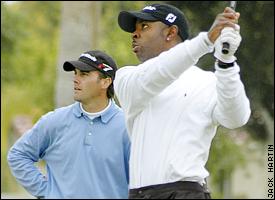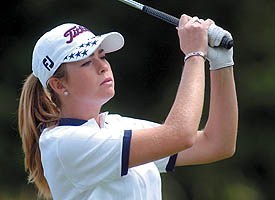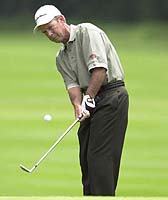 It happens every year – over 150 golfers get together for six rounds of golf, fighting for a chance. A chance to become a PGA rookie, a chance to rekindle your career, or a chance to join your Dad on the Tour.
It happens every year – over 150 golfers get together for six rounds of golf, fighting for a chance. A chance to become a PGA rookie, a chance to rekindle your career, or a chance to join your Dad on the Tour.
For 35 players this year, their dreams were answered when they earned their Tour Cards at the PGA’s Qualifying School at PGA West. Leading the pack of players was Ben Davis, the Brit who won with a six-round 415 and ending one shot better than fellow Tour player Rob Rashell.
Bill Haas, son of Jay Haas, was looking to join his dad on the Tour and looking to convert more than one of the eight birdie opportunities he had on the back nine at the Stadium course. He did neither with a final-round 71, missing his card by two strokes.
Joy, agony and Tim O’Neal.
 Closing with a 2-under 70, Paula Creamer cruises to a five-shot victory in the LPGA qualifying tournament. Six months from high school graduation, Creamer has secured a spot on the 2005 LPGA Tour.
Closing with a 2-under 70, Paula Creamer cruises to a five-shot victory in the LPGA qualifying tournament. Six months from high school graduation, Creamer has secured a spot on the 2005 LPGA Tour. Larry and Drew Nelson shot 25-under in the two-round tournament to win the
Larry and Drew Nelson shot 25-under in the two-round tournament to win the  The next ten “Tip of the Day”s are being taken from an article by Dr. Bob Rotella for Golf Digest, titled “
The next ten “Tip of the Day”s are being taken from an article by Dr. Bob Rotella for Golf Digest, titled “